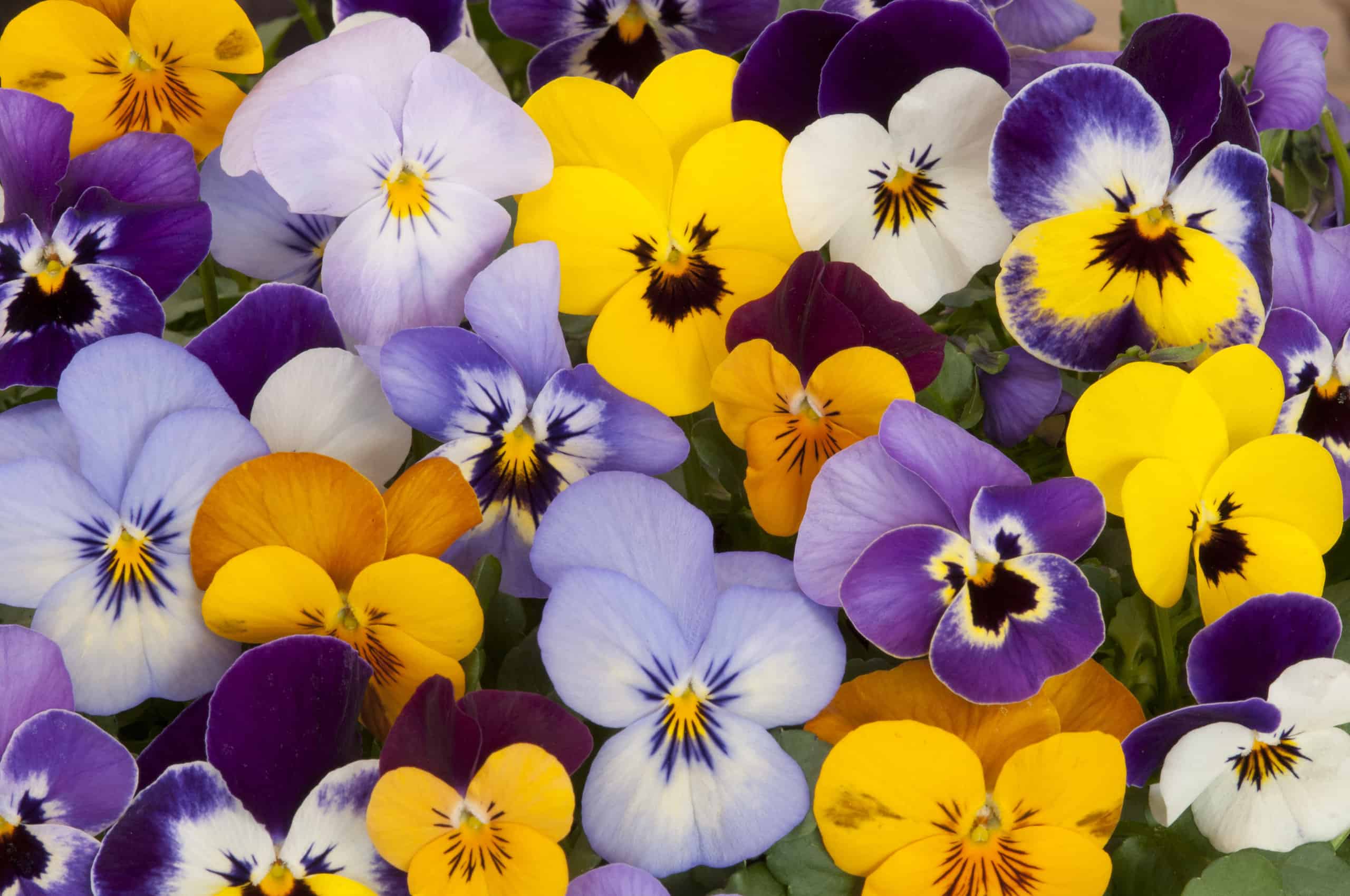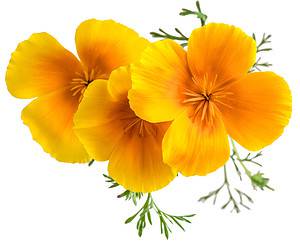Pansies are delightfully whimsical little flowers that add color and joy everywhere they go. However, these flowers are more than just their beautiful blossoms. With their vibrant colors and unique shape, pansies hold a powerful meaning and symbolism for many people. In this article, we’ll explore the rich history and hidden meanings behind these charming flowers, and guide you on when and how to use them!
What Is a Pansy?
Pansies are a type of hybrid flower that comes from the Viola genus. Most pansy cultivars can trace their ancestry back to the Viola tricolor wildflower, or wild pansy. The wild pansy (Viola tricolor var. Hortensis) has played an important role in creating the modern-day pansy flowers (Viola x wittrockiana) that we see today. Although their ancestry originally comes from the viola species, pansy flowers have larger blooms that come in many different colors.
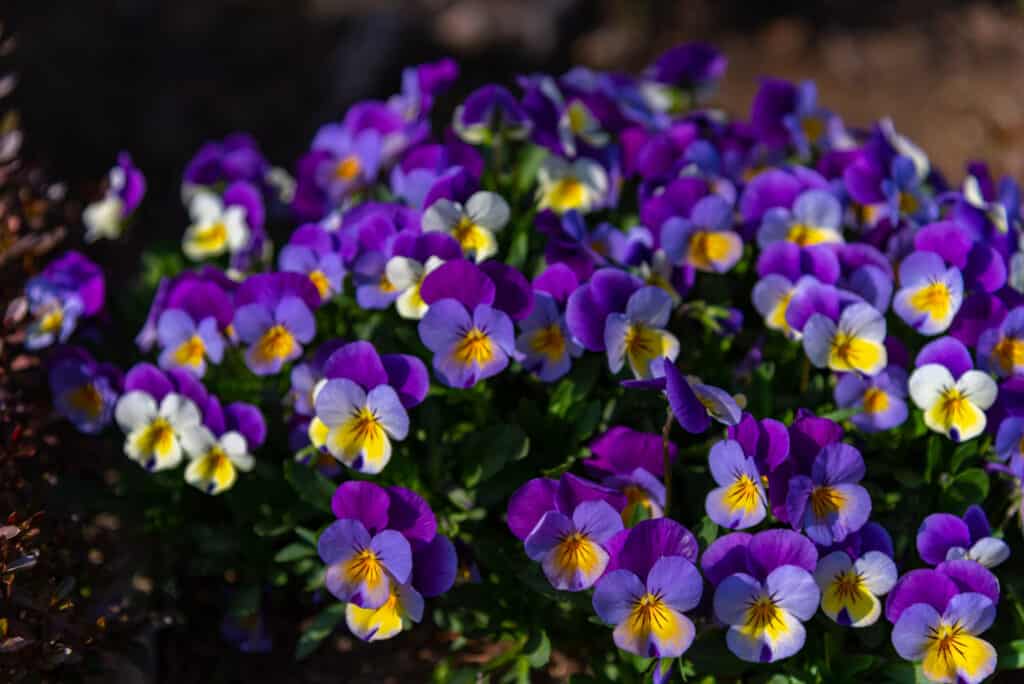
Wild pansies, also known as heartsease, heart’s ease, and Johnny jump-ups, are common European wildflowers.
©Shawn.ccf/Shutterstock.com
Appearance
Pansies are charming little plants with large, heart-shaped flowers and velvety overlapping petals. They come in all sorts of vibrant colors and patterns, from purples and pinks to yellow, red, white, and black. The dark markings at the center of each flower make the cheerful little blossoms look like they have a “face” that is saying “hello!”. Depending on the variety, pansy blossoms can be anywhere from 1 inch to 4 inches in diameter, while the plants themselves can grow up to 6 inches tall and 12 inches wide.
Native Habitat
The ancestor of the modern pansy, Viola tricolor (also called field pansies, Johnny jump-up, wild pansy, and heartsease), is a wildflower that grows throughout Western Asia and Europe. Depending on where they are found and how cold the winters get, field pansies can be perennial or annual flowers. Field pansies are self-sedding wildflowers, so they grow easily in the dry open ground along beaches, roadsides, old fields, bluffs, and meadows. They bloom from April to June and prefer well-drained soils that are evenly moist, typically in part shade to full sun.
Growing Tips
Pansies are beautiful little garden treasures that are fairly easy to care for. Since they are low-growing plants with colorful blooms, they also are a great choice for borders, bedding plants, and containers. Most people grow pansies as annual flowers, although some species are able to reseed themselves and return year after year. Gardeners in northern zones usually plant them in the spring, while those in warmer areas prefer to plant them in the fall or winter.
Although they are small and delicate, pansies are resilient plants that actually enjoy cold weather and can withstand light freezes and even snowfall. However, they are not fond of hot and humid conditions. Pansies thrive in full sun but can also flourish in partially shaded areas.
You can plant pansies in the early spring or fall. They can withstand light frost just after planting, but it’s best to wait until temperatures are above freezing before adding them to your garden. Although these flowers adore the full or partial sun, they thrive best in cooler temperatures.
To keep your pansies smiling and looking their best, it’s crucial to water them regularly. If you want to encourage your pansies to produce more blooms and prolong their blooming season, remove any faded or dead flowers. You can do this by pinching off the flower bud or cutting it just below the faded bud.
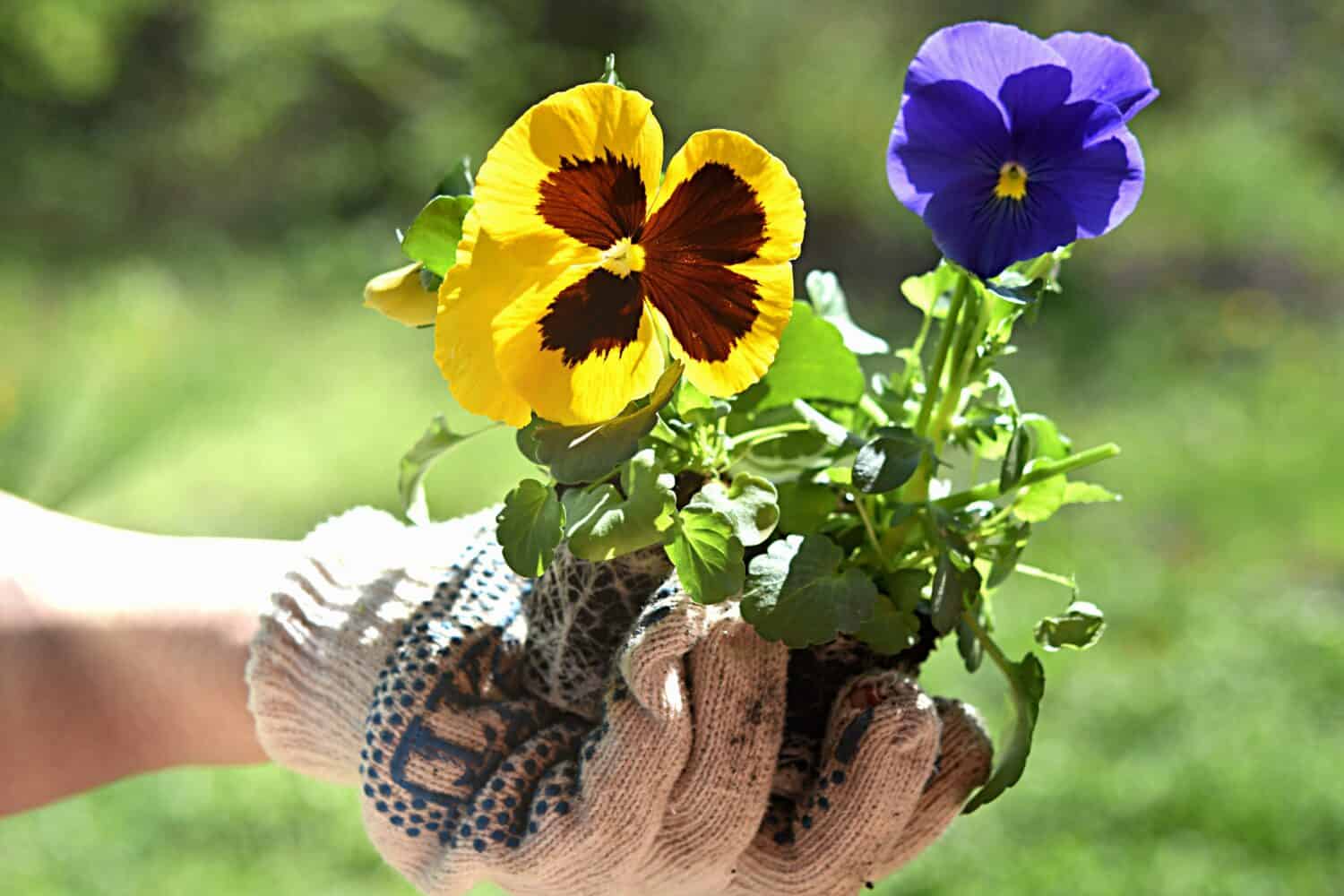
Today’s garden pansies are much bigger than their wild pansy ancestors, with blossoms between 1 inch to 4 inches across instead of 0.8 inches across.
©Michkasova Elena/Shutterstock.com
Pansy Meaning and Symbolism
Since ancient times people from all corners of the world have been attaching different emotions and meanings to various flowers. In fact, the significance and symbolism may vary widely depending on location. Even within a single culture, one flower may come to represent multiple things. Let’s take a closer look at the fascinating world of pansies and discover the meaning and symbolism of these cheerful little flowers!
Thoughtfulness
Pansies were aptly named after the old French word “pensée” meaning “to think”, and have long been associated with thoughtfulness. As the flower’s name was incorporated into English, it became synonymous with the viola, and its intricate patterns and striking colors were seen as a reflection of the emotional variety and musings of the human psyche.
Shakespeare referenced the pansy’s meaning and symbolism in Hamlet. In the plan, Ophelia remarks, “There’s pansies, that’s for thoughts” as she distributes flowers in mourning for her father.
Free-Thinking
In addition to being a symbol of thoughtfulness, in the late 19th century pansies also became a symbol for free-thinking in France. This epistemological viewpoint is an idea that says we shouldn’t believe in something simply because someone in authority or tradition tells us to. Hypatia Bradlaugh Bonner explained that at the 1890 International Freethought Congress in Prague, attendees identified one another by wearing pansies.
Love (Romantic or Friendship)
The wild pansy goes by many names, one of which is heartsease or heart’s ease. Not only are pansies edible, but they also have many medicinal properties. Long ago, pansies were used to help heal different ailments, from respiratory issues to fevers. Many believed that they could also cure lovesickness in the heart, and some even used them in love potions.
According to an ancient Roman story, Cupid accidentally hit a wild pansy with one of his powerful arrows, giving the flower the power to make someone fall in love. Even Shakespeare included heartsease in his play, A Midsummer Night’s Dream: “The juice of it, on sleeping eyelids laid, will make a man or woman madly dote upon the next live creature that it sees”.
During Victorian times, the language of flowers was quite popular, and although each book varied somewhat, pansies typically represented the sentiment that “you occupy my thoughts”, or “thinking of you”. These bright blooms were frequently gifted to friends or lovers as poignant reminders of their affection. Pansies and violas were also popular motifs in fashion and jewelry during the Victorian and Edwardian eras.

Today’s garden pansies are hybrid flowers that came from the wild pansy (
Viola tricolorvar.
Hortensis).
©Leecy Jones/Shutterstock.com
Remembrance and Nostalgia
According to one of the tales in ancient Greek mythology, Zeus — the powerful ruler of the Olympian gods — once fell head over heels in love with a nymph named Io. However, Zeus was already married to Hera. Hera knew of her husband’s many affairs and often took out her rage on the women involved. So, to protect her from Hera’s wrath, Zeus transformed Io into a heifer. Now that she was a cow, the once-delicate nymph soon began to weep. In a moment of compassion, Zeus transformed Io’s tears into violas or pansies, hoping that the flowers — a piece of her past life — could help bring her joy, even in her new bovine form.
Pansies symbolize remembrance and nostalgia, thanks to their beautiful and vivid colors. In addition, when pansies begin to decay and wilt, their face-like blossoms lean forward, making them look like someone who is deep in thought or melancholy. As mentioned earlier, Shakespeare’s Ophelia uses pansies to symbolize her thoughts after her father died. Pansies are often planted in cemeteries, spreading their bright colors and cheerful faces but also serving as a way to remember loved ones.
Stepmother
In Czech, the word for pansy or viola is “maceškain” — derived from the diminutive of the word for stepmother. Legend has it that the flower earned this name because its blossom looks like a sullen face. In German, it is called “Stiefmütterchen” or “little stepmother”.
According to a German folktale, a king with two daughters married a new wife who already had two daughters of her own. The large, striking petal at the bottom of the flower is the stepmother, while the two petals just above it represent the stepmother’s daughters. These three petals are larger and more decorative than the others, reflecting the stepmother’s favor. The two plain-colored petals at the top of the flower — hidden behind the stepdaughters’ petals — represent the king’s daughters. The golden center of the flower represents the king himself.
In a darker version of the tale, the stepmother and stepdaughters win. However, in another version, the stepmother and her daughters end up with mustaches due to their evil deeds.
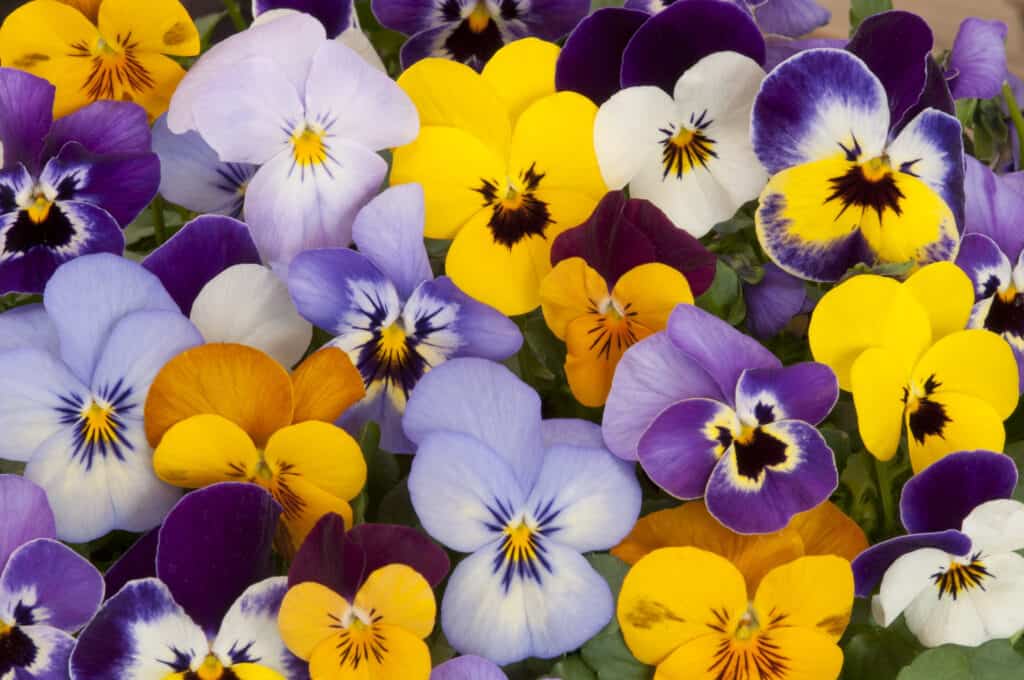
Much like the ones in Disney’s
Alice in Wonderland,real-life pansies often look like they have cute chubby faces!
©Anjo Kan/Shutterstock.com
Holy Trinity
During the Renaissance Era in Europe (the 1400s to 1600s), there was a deep spiritual awakening among Christians who sought divine inspiration from nature. To aid their contemplation of the divine, they often featured beautifully painted landscapes and intricate plants in their illuminated manuscripts. The heartsease flower, which today we know as the wild pansy or viola tricolor, was commonly used. With its three colored petals, the pansy was seen as a symbol of the Holy Trinity, representing the Father, Son, and Holy Spirit.
Meaning and Symbolism of Pansy Colors
In addition to the pansy itself, the different colors of this delightful little flower have their own different meanings as well. Here are some of the more common colors and their associated meanings:
Purple Pansy
Due to how difficult it was to obtain purple dye, purple has traditionally been linked to royalty and power across various cultures. Purple pansies come in rich and vibrant shades of violet, embodying the essence of dignity and nobility, grace, and sophistication.
On the other hand, however, there is a bit more to the purple pansy than meets the eye. Black or dark purple pansies represent a broken heart. Their somber hues convey a sense of sadness and longing. Purple pansies can represent that while the giver of the flower loves the receiver, the receiver does not return that affection or does not show it.
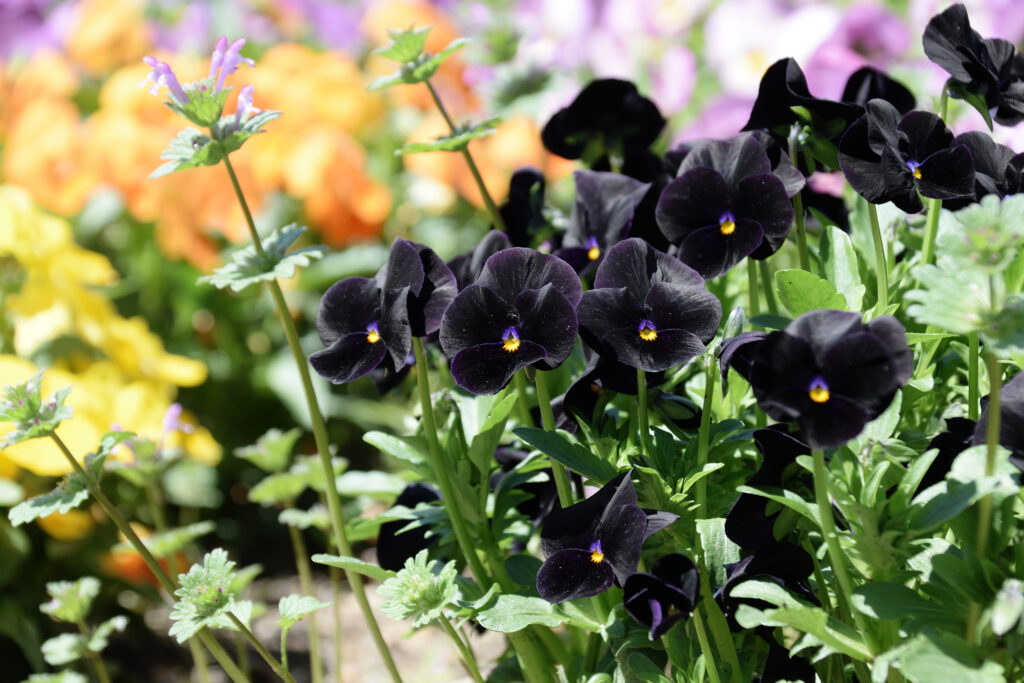
Dark purple pansies are almost black in color.
©Ken Kojima/Shutterstock.com
Red Pansy
Although pansies, in general, are a symbol of love, red pansies in particular are the epitome of love and affection. The color red is often synonymous with passionate love, and red pansies are a perfect symbol to express those feelings to a special someone. However, red pansies are not limited to only romantic love — they can also represent platonic love. This makes them a versatile gift to show appreciation for a family member or a friend.
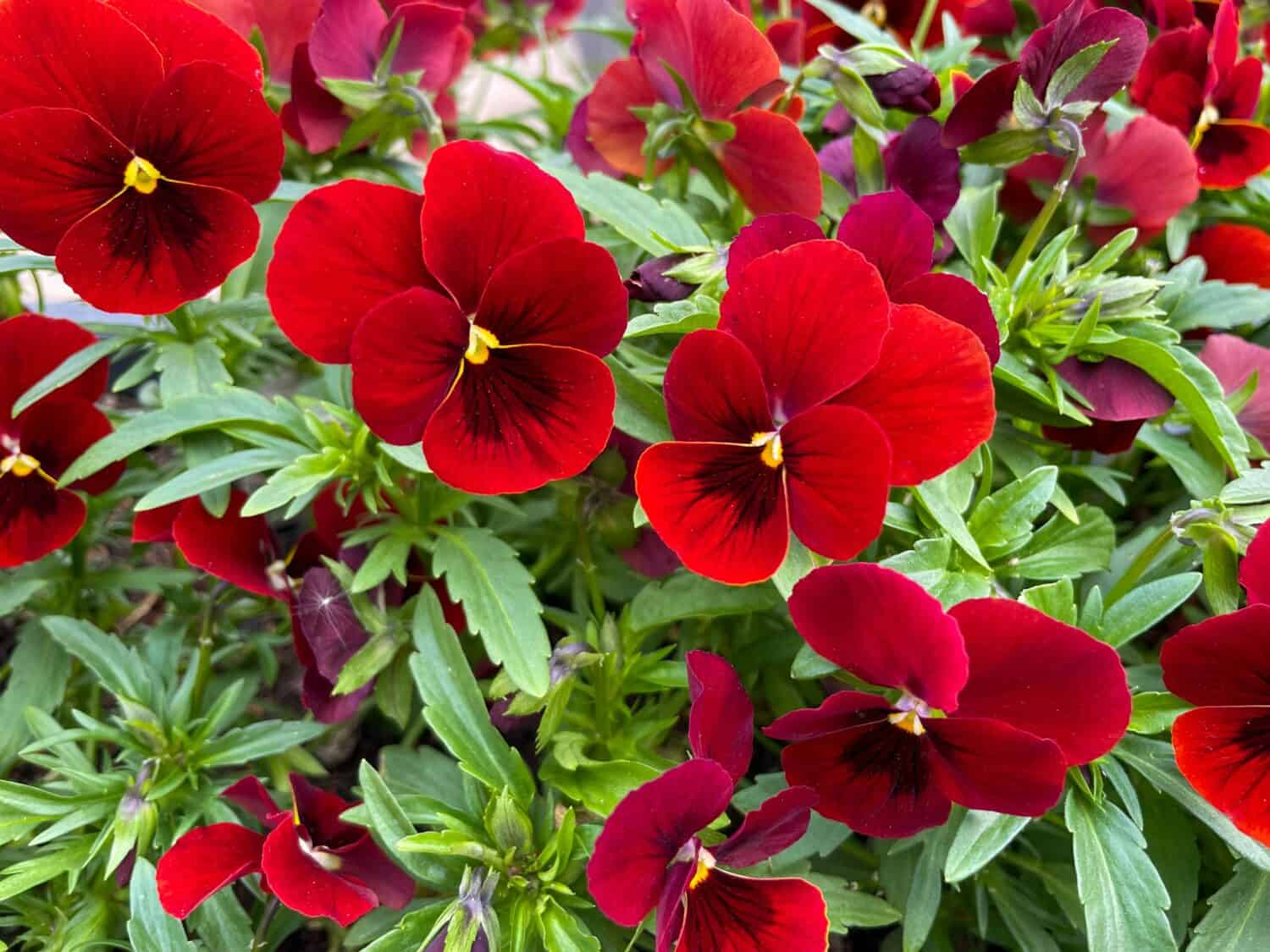
The striking color of red pansies makes these flowers stand out from any crowd.
©Lapa Smile/Shutterstock.com
Blue Pansy
Blue pansies come in many different shades, making them wonderful gifts and beautiful additions to any garden. They symbolize loyalty, honesty, devotion, and trust. Blue pansies can make great gifts for friends or trusted colleagues.
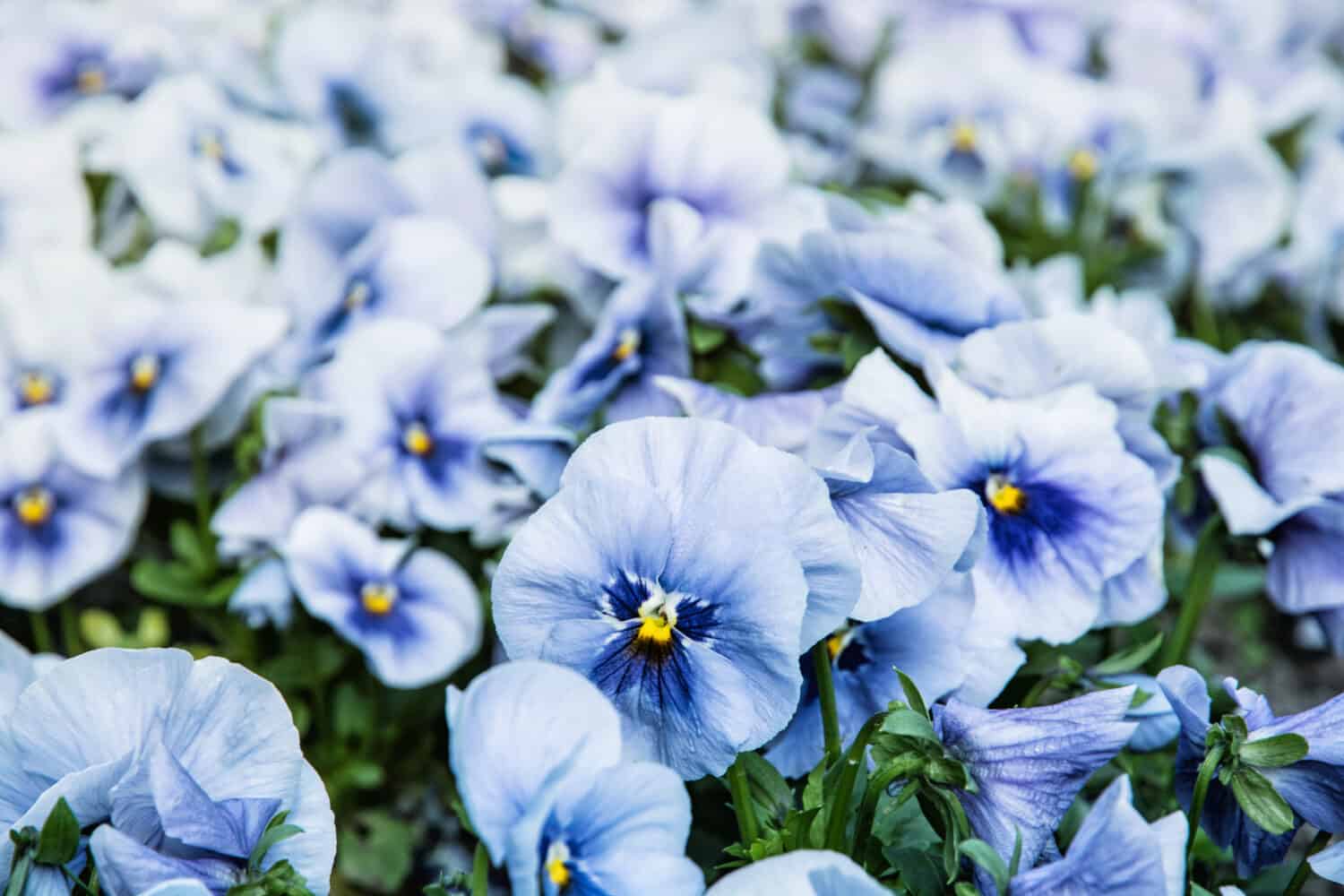
There are many shades of blue pansies, from striking sapphire hues to light baby blues.
©PeterVrabel/Shutterstock.com
Orange Pansy
You won’t see orange pansies nearly as often as the color is not as common, but that just makes them even more striking. Vivid and energetic, orange pansies represent hope and optimism, embodying the essence of positivity. These flowers are great gifts for those who need a bit of encouragement or a boost of confidence. Orange pansies can also be used to celebrate achievements.
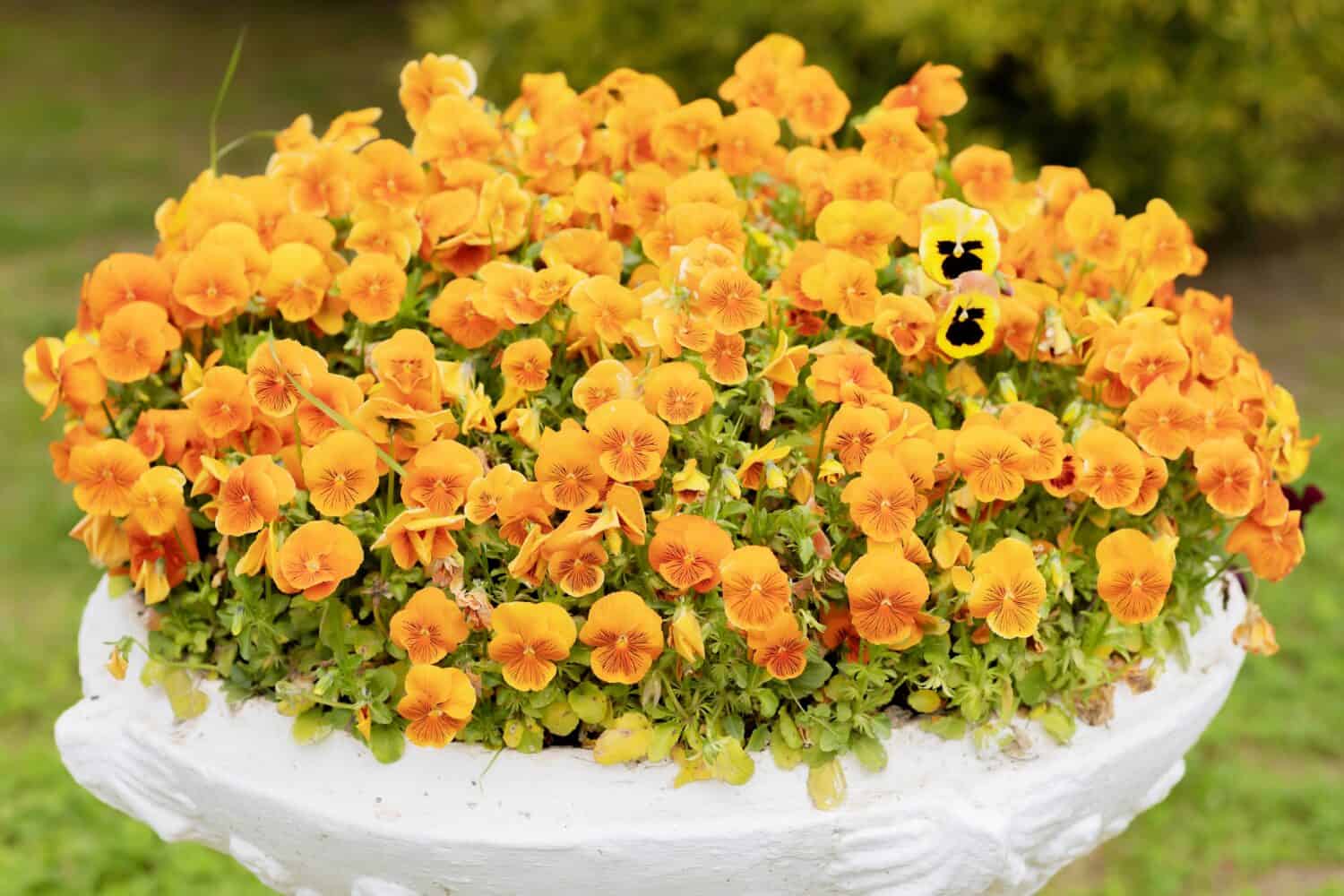
Although they aren’t necessarily “rare”, orange pansies are not as common as many of the other colors.
©3d_and_photo/Shutterstock.com
Yellow Pansy
Yellow is a very buoyant and joyful color, which makes yellow pansies an excellent way to revitalize even the dullest settings. You can keep them close to your heart as a reminder to stay positive and joyful or give them to someone who needs a little pick me up. If you know someone is going through a tough time, yellow pansies can be the perfect gift. Their vivacious energy is contagious and a great way to brighten someone’s day.
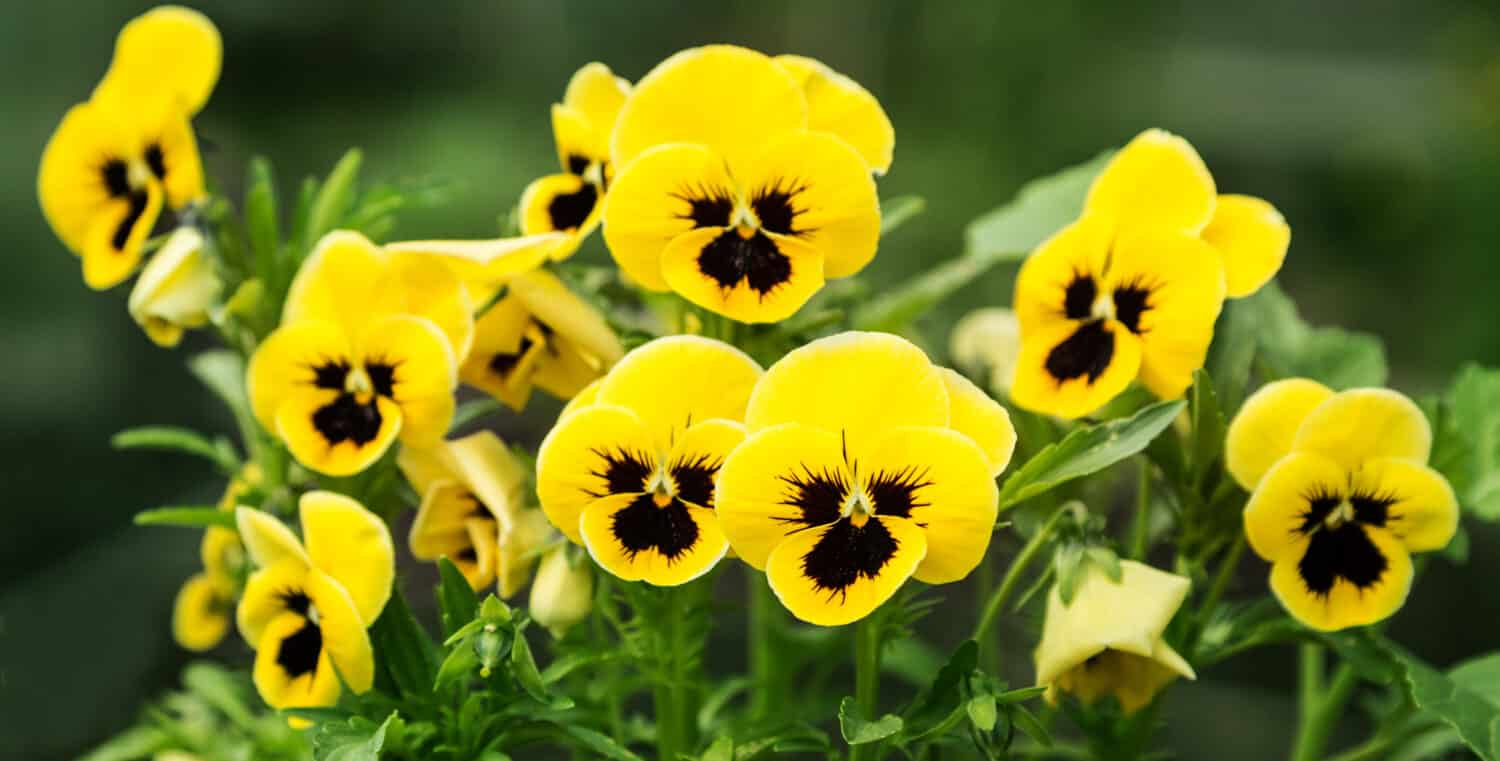
Yellow is one of the most common colors in pansies — so many people love these cheerful flowers because of the joy and positive energy they bring!
©Mariia Khamidulina/Shutterstock.com
White Pansy
With their pristine white petals, white pansies symbolize things like virtue, purity, and innocence. White pansies also have a strong spiritual association as well. If you want to give someone a flower but you’re not quite sure what you want it to convey, then a white pansy is a great go-to choice. The pureness and virtuousness of white pansies make them a perfect symbol of starting a new journey with someone you admire. The spiritual connotation of white pansies also adds to their significance as they are believed to bring positive energy and blessings into the lives of those who possess them.

White pansies are like a blank slate when it comes to meaning, so you can use them to convey a plethora of different messages and sentiments.
©Brita Seifert/Shutterstock.com
Proper Occasions for Pansies
February Birthdays
If you know someone with a February birthday, then a pansy is the perfect gift! In fact, pansies and violets are the official birth flowers for February. Pansies bloom early in the season — often alongside the arrival of February — making them the perfect flower for a February birthday. However, purple pansies, in particular, are a popular choice due to their striking resemblance to February’s birthstone, the amethyst.
Desserts and Parties
One of the really cool things about pansies is that they are actually edible! Sometimes you can even find pansies at the grocery store in the refrigerated section. You can use pansies for cocktail garnishes and cake decorating, as well as for making syrup, natural dyes, and flavored honey.
Funerals, Cemeteries, and Gravesites
Pansies are cheerful flowers that symbolize remembrance, helping us to honor our loved ones who have passed on. Their unique heart-shaped petals are often associated with love and affection, making them a fitting tribute to a cherished family member or a friend.
However, planting pansies throughout cemeteries is not just about paying respects. It’s also a wonderful way to bring beauty and color to these solemn places, especially in the colder months. Pansies help transform these areas into inviting and warm places that offer comfort and solace to visitors. And with their resilience and hardiness, pansies are able to withstand the elements and thrive in a wide range of conditions.
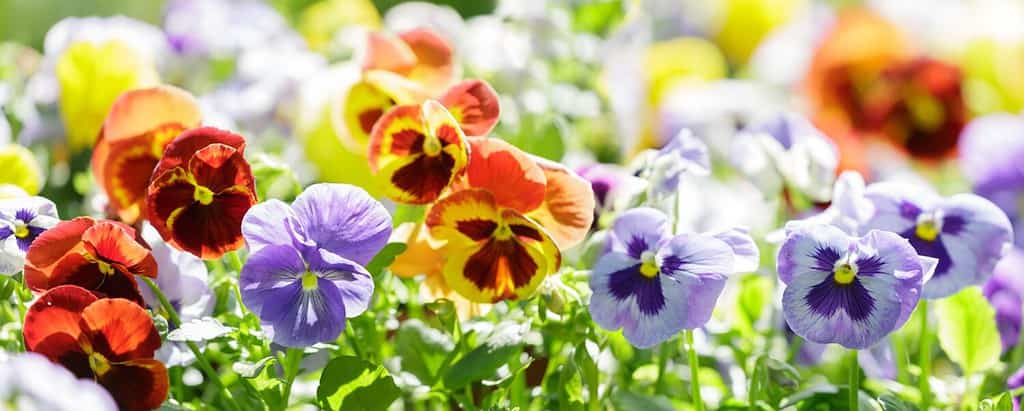
Pansies come in so many different bright colors and patterns, which makes them a great addition to cemeteries and gravesites.
©Nitr/Shutterstock.com
Holiday Gifts
Pansies are a popular choice for holidays like Valentine’s Day and Mother’s Day. These charming little flowers make great gifts to convey thoughtfulness, whether in a romantic relationship or a friendship. Their heart-shaped petals convey the warmth and tenderness of love. Whether in a bouquet or as a standalone gift, pansies make for a thoughtful gesture that is sure to bring a smile to your loved one’s face.
Anniversaries and Friendships
Pansies are a perfect choice for expressing thoughtfulness and remembrance in any long-lasting relationship. These beautiful flowers are often used as a gift for anniversaries and to celebrate friendships, as they symbolize the care and attention required to keep a relationship strong over time. Their soft, velvety petals speak to the tender touch and gentle affection that is part of a successful partnership. They also serve as a graceful reminder of the commitment and devotion between two people, like the perfect way to say “I remember” and “I care”.
Thank you for reading! Have some feedback for us? Contact the AZ Animals editorial team.

